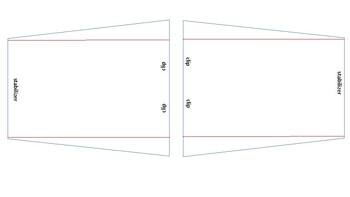Ground Effect Vehicle
- PDF
Description
Ground effect vehicles are able to move over smooth surfaces by gaining support fromt he movement of air pushing aginst the surface of the earth.
Print out the attached worksheet ON CARDSTOCK
1. Students need to cut out their GEV by cutting close to the blue line but NOT ON the blue line.
2. They can color the device if they would like. Color pencil and crayons ONLY. The ink from a marker could weigh down the device.
3. They will then need to fold along the pink line.
4. Add two clips- this is one of the places students have the ability to test out different designs. Try one paper clip, two paper clips, 1 binder clip, 2 binder clips, etc.
5. Use an index card to make a stabilizer and attach with tape. This is a second wayt students can test different designs. Try a tube, rectangle, square, etc.
TIPS for a good launch:
-Have the binder clips in front and place you hand on the back near the stabilizer.
-Push hard. You can even have students try "smacking" it
**Items not included
-3/4" binder clips
-paper clips
-index cards (you don't have to use index cards. You could cut up piece of cardstock and that would work the same)


